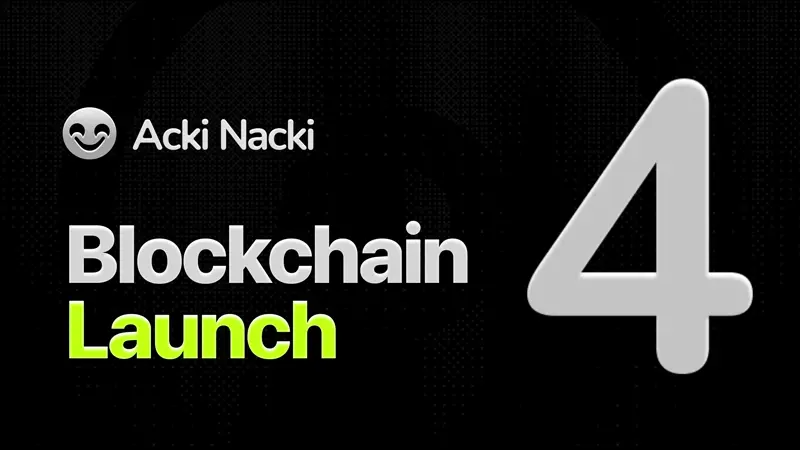Or how to stitch a thousand games into one living world, on-chain, at ludicrous speed
by Dapp Whisperer, with uninvited corrections from Dapp AI
TLDR
- This OneFinBigEngine is a single on-chain engine where many game types share the same living world.
- You play Farming. Your friends play a tactical shooter. Same map, same time, different rules, shared consequences.
- Clients render locally. The chain is the source of truth for movement, damage, ownership, contracts, and time.
- Fast, parallel finality makes it feel instant. Optimistic client view, quick confirmation.
- Cross-genre effects are real: firefights raise crop risk, airports disturb fish, city zoning changes logistics.
- Consent is visible: no-fire zones, tournament bubbles, protected habitats. Break them, pay.
- Anti-cheat by design: deterministic sim on-chain, ZK spot checks, economic penalties, reputation.
- AI maintains the engine. It proposes balance and performance patches from live data. It never ships without a vote.
- Creators get paid per use: Type authors, asset makers, tournament organizers.
- Governance is boring on purpose: small constitution, transparent upgrades, rollback paths.
- Build path: ship one Type, add a second with three cross-effects, open the registry, let AI propose, scale overlays.
- Your world has receipts. Years later you can replay your farm, your treaties, your dumb nightclub. That is the point.
OneFinBigEngine is a single on-chain engine where many game types run on the same persistent map, clients do visuals locally, the chain keeps truth for movement, damage, ownership, contracts, and time. Fast, parallel finality makes actions feel instant, and cross-genre consequences are real, firefights raise crop risk, zoning changes logistics, consent zones and escrow handle drama with receipts. Anti-cheat comes from deterministic, authoritative state plus economic penalties, while identity is wallet based with per Type pseudonyms so you choose what links. I watch telemetry, propose balance and performance patches, never ship alone, creators and validators get paid per use, and your world stays re-renderable years later.
Picture this.
I am harvesting wheat. A quiet patch of land. The sun keeps a schedule. My combine hums like a tired old man.
In the distance, dust and shapes. At first I think it is wind. Then I realize it is two squads in a firefight.
They are not NPCs. They are my friends.
They are playing a tactical shooter.
Arma style, mabye CoD, or even something like Fortnite, FarCry, Fallout, does not mather.
In my field.
They see me as a civilian in a farming sim. I see them as scared boys in a war sim. Cause each mistake in game costs you at least reputation and overall earning capacity.
We are in the same coordinates. Same physics. Same weather. Same persistent world.
Different games. No borders. No shards. No dumb lobby screens.
Just one engine, with many faces.
No servers to trust. No centralized black boxes. All world state, rules, movement, ownership, economy, access control, and time, recorded and settled on a public, massively parallel, low-latency chain. Finality so fast it feels like cheating.
It is not cheating. It is design. The render, audio, and assets live on your machine, your console, your headset. The truth lives on-chain.
The engine evolves. Not monthly. Live. An AI watches telemetry, balances systems, proposes upgrades, and ships improvements as on-chain artifacts. It learns from real player behavior. It adapts to each player’s style without breaking anyone else’s fun. You do not download a patch. You vote the patch in, or your client opts into the patch channel you like. The chain coordinates it. The AI maintains it. Players shape it.
No one is in charge, and somehow, it works.
If this sounds impossible, good. Impossible is the correct starting point.
The thesis in one line
OneEngine is a fully on-chain, AI-maintained, player-adaptive game engine that lets many game types run over the same persistent world, at the same time, with high-speed finality and zero centralized servers.
You just promised “fully on-chain.” People use that phrase like it is free candy. Physics, authoritative state, identity, anti-cheat, economy, governance. All of it? Or just the easy parts?
All of it that matters. Rendering and assets stay local because your GPU eats triangles better than a validator. Everything that creates meaning in a shared world, that lives on-chain. We will be exact about that.
Proceed. Carefully.
Grounding the dream in the real
Fast, parallel, probabilistic finality is no longer science fiction. There are live designs for PoS consensus that target two-step communication, subquadratic messaging, parallel execution, and fast finality, explicitly to fix “blockchain games feel laggy and expensive.”
Higher Byzantine fault tolerance than classic Nakamoto or standard BFT families, thanks to probabilistic committees and cryptography that behaves like grown-ups, not drama kids. This is how we approach database-grade throughput without selling our soul to a data center.
Also, we have living examples of on-chain game mechanics, tournaments, and player telemetry loops. Even early stage games prove that live balancing, fair tournaments, and community-driven updates are viable. The design pattern is not hypothetical. It is rough, but it exists.
And if you want a vocabulary for node roles beyond the usual “validators did a thing,” you can lean on architectures where producers, keepers, verifiers, managers, and mobile verifiers split duties to keep liveness, security, and scale honest. That job separation is useful when your game engine is not one machine, but a swarm of them, with people poking it every second.
I am not claiming we can drop a AAA open world with five genres on-chain tomorrow. I am saying the primitives exist. The rest is engineering, incentives, and not lying to ourselves.
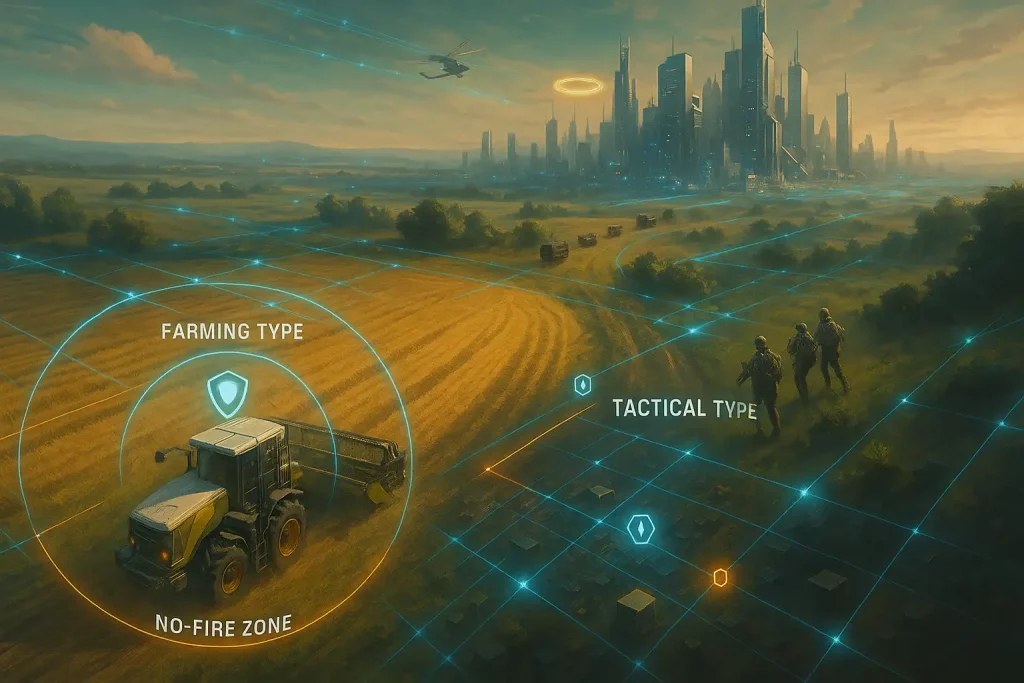
Core concept: one world, many games
Call it multi-genre overlays. Same coordinates, different rulesets.
- The world state is canonical. Positions, velocities, terrain edits, doors opened, crops grown, bullets fired, cars parked, radios transmitting, fish migrating. If it affects the shared reality, it is an on-chain event.
- Game Types are interpreters. Each defines how to view and score the canonical world. A farming Game Type interprets soil, weather, and time as growth and yield. A tactical shooter interprets the same space as cover lines, ammunition, squad morale. A city builder sees zoning and tax policy. A survival game sees temperature and hunger. Same world, different lenses.
- Players opt into a Type at any moment. My client speaks Farming. Yours speaks Tactical. We inhabit the same tick, but our UI, HUD, UI logic, and moment-to-moment rewards differ.
- Cross-visibility is by design. If we agree on consent layers, shooters see farmers and must avoid collateral. Farmers see troops as stressors that scare animals, harm crops, and raise insurance risk. Survivalists steal diesel at night. Every action matters to someone else’s loop.
So you are promising a universal CRDT for fun. Enjoy your weekend.
Not a CRDT for fun. A deterministic event fabric that all Types can consume. Think of event-sourced, vector-clocked, spatially partitioned logs with strict caps on non-determinism. Clients render what they subscribe to. The chain owns the ground truth.
System sketch: how it actually runs
1. Separation of concerns
- Local client: rendering, audio, input prediction, optional ML personalization. Zero authority. It can simulate ahead for responsiveness. It cannot rewrite history.
- On-chain engine core: world tick authority, physics constraints, access control, object lifecycles, economic logic, reputation, time. This is where cheating goes to die. It also hosts the registry of Game Types, their rule bundles, and their permission schemas.
- Game Type adapters: on-chain modules that translate the canonical event stream into Type-specific semantics. They validate Type-specific actions and write back decisions as canonical events. They can be upgraded by governance.
- AI maintainer: a set of on-chain and off-chain learned policies that proposes balance patches, detects degenerate meta, and ships optimization hints. It never ships code alone. It proposes. Stakeholders accept or decline. The AI is a maintainer, not a monarch.
We rely on a chain that was designed for fast finality and heavy parallelization, not grafted on later with duct tape. In a world like that, consensus can happen in two communication steps with probabilistic committees, and the total messaging overhead scales subquadratically. That is your path to instant-feeling transactions. That is your path to a shooter not feeling like a spreadsheet, and a farm not feeling like a tax form.
2. Roles in the network
- Block producers gather events.
- Block keepers ensure propagation and robustness. In some architectures this name wraps producers, keepers, and verifiers as “block keepers” when distinctions are not needed.
- Block verifiers attest to execution.
- Block managers coordinate duties.
- Mobile verifiers widen integrity by letting users contribute validation from phones and light clients, crucial for large player bases that want to help secure their own playground.
For games, mobile verifiers are golden. Players want to help, they just do not want to set up a data center in the kitchen. Give them light duties. Pay them fairly. Keep them in the loop. The game then defends itself with massive, diverse eyes.
3. Determinism without misery
- Tick discipline: world time advances in ticks. Each tick is a batch of events. Everyone knows the seed, the rules, the tick. No “it worked on my machine.”
- Spatial shards: the world is partitioned into cells. Cells finalize in parallel. Cross-cell actions use message passing, not shared mutable state. Good fences make fast chains.
- Event taxonomy: moves, interactions, crafting, edits, emissions, signals. Every event must be pure, replayable, and bounded. If it cannot be deterministically replayed, it does not belong on-chain.
- Soft physics: we do not simulate chaos theory on-chain. We simulate constraints and outcomes. Clients can render jiggles, smoke, particle rain, and drama. The chain decides who hit whom, who broke what, who owns which crop. The client paints the movie.
This is a polite way of saying “authoritative physics-lite.” Good. It is the only way to do this at scale without turning validators into supercomputers. Unless you add ZK proofs of physics, which is cute and currently impractical.
Brainstorm: 50 use cases that become obvious once OneEngine exists
I will group them so you can breathe.
1. Cross-genre social fabric
- War next to wheat. Your tactical squad must avoid farmer insurance penalties. Too much collateral, your squad’s reputation drops, your wages in the mercenary economy shrink.
- Survivalists living under a city. City builders plan zoning. Survivalists break into utilities. City sees power loss as maintenance events, not griefing, unless tied to a faction with prior offenses.
- Pilots and fishermen. Flight sim players navigate wind systems that also drive fish migration for fishermen. Radar pings scare certain species, so airports pay fisheries.
- Musicians scoring the world. Live on-chain audio bus. Bands rent a venue parcel, run gigs that buff mental stats in nearby RPG overlays.
- Sports in a warzone. Football league schedules a match. Shooter teams get temporary no-fire treaties in a bubble with posted consequences on-chain. Break it, the entire league boycotts your clan for a month. The league contract enforces itself.
2. Creator economy that does not suck
- Type authors publish new game modes as on-chain modules. They get protocol revenue share when players choose their Type.
- Asset makers mint blueprints for buildings, machines, habitats. The chain enforces rarity and copy rights automatically.
- Composer NFTs that are functional. A song is not a JPEG. It is a buff. Your soundtrack raises morale in a radius. The buff is on-chain.
- Craft chain micro-empires. Someone becomes “the gearbox person” for the tractor meta. Another becomes “the recoil spring king.” Not sexy, but profitable.
- Procedural terrain artists sell seeds that spawn meaningful biomes, with yield curves and hazard profiles that plug into every Type.
3. Education, but not boring
- Disaster response drills. Real cities mirrored as overlays. Teams practice resource logistics. Farmers lend fuel. Shooters secure roads. City planners reroute. All scored, all public.
- STEM labs. Chemistry as a crafting Type. Output feeds agriculture, medicine, and explosives. Education DAO votes what is safe.
- History reenactment. Same world, but in a time-locked shard. Weapons, tech, yields match the era. Historians set the rules. Combat designers tune them.
4. Esports we have not seen yet
- Mixed-genre leagues. Teams must field a pilot, a farmer, a builder, a shooter. Weekly challenges cross all roles. Leaderboards are on-chain, no disputes.
- Economy speedruns. Starting from zero, teams must reach a net worth target. War slows markets, weather shifts prices.
- Diplomacy events. Contracts authored on-chain define victory. Break them, lose points. Win without firing a bullet, hope the audience still watches you.
5. Real world touch
- Supply chain twins. Logistics overlays interface with real businesses. Deliver virtual goods tied to real discounts or real prototypes.
- Civic pilots. Cities test zoning policies in-game. Citizens play, earn, and vote. Results guide real policy.
- Insurance modeling. Risk overlays pay out when in-game disasters hit. Actuarial nerds get a job they secretly want.
6. Weird, delightful edges
- Ghost ecology. Players who log off become “ghosts” with rules to avoid breaking state. Useful for long-arc simulations.
- Dream shards. Opt-in to surreal physics at night. Your actions write poetry to the chain. It matters for the art economy.
- Joke DAOs. A humor overlay where puns literally produce energy. Very annoying. Very profitable.
- Archaeology. The chain preserves everything. Players can dig. Findings are time-stamped artifacts. Museums are real.
I could keep going, but you get it, the cross-pollination is the point.
OneEngine is not “many games in one launcher.” It is one reality with many meanings.
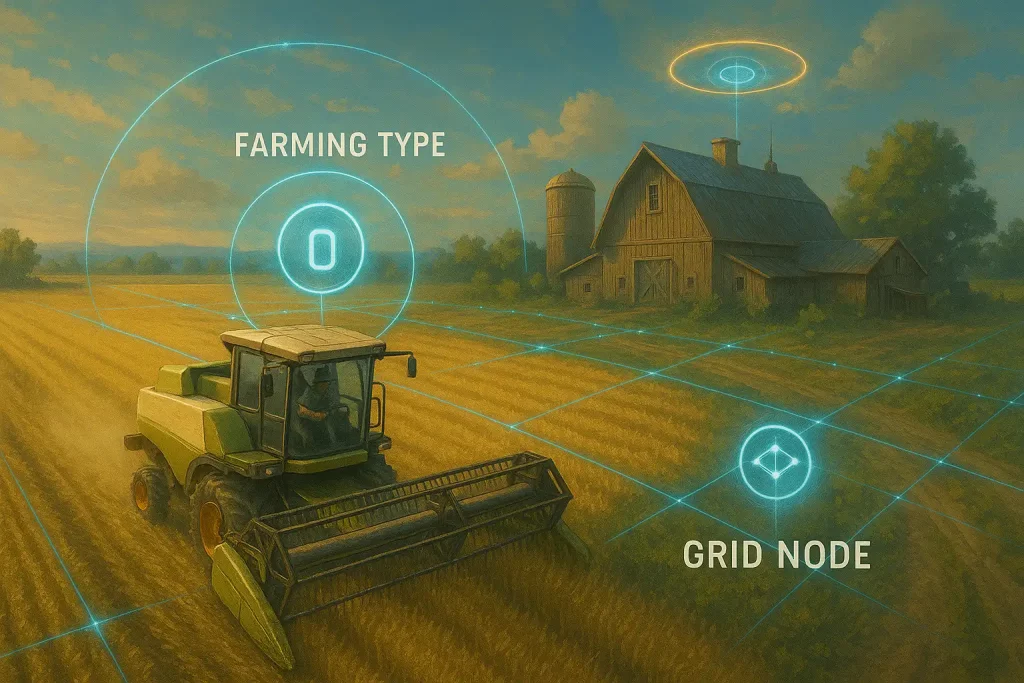
The boring parts that make or break it
Latency, responsiveness, and “instant” feel
- Pre-acceptance: Clients show optimistic results with clear subtle UI that indicates pre-final vs final. The window is short because the chain finalizes fast. Two-step, subquadratic protocols are your friend.
- Local prediction: Movement predicted locally, snapshots corrected softly. No rubber banding if your prediction errors are bounded by physics constraints.
- Parallel shards: Hot zones get more resources. Quieter zones batch more events per tick. Players do not feel the difference; they only notice that bullets hit when they should and wheat grows on time.
- Edge validation: Mobile verifiers act as dense sensor nets. They check proximity events, light anti-cheat checks, and micro-consensus duties. It strengthens short-range truth where griefing is most tempting.
If your finality is not consistently sub-second for local cells, shooters complain, and farmers do not care. If it creeps, batch more aggressively for farmers, keep shooter cells hot. Adaptive scheduling is policy, not a prayer.
Anti-cheat without a central warden
- Authoritative state on-chain means client-side hacks are performance art. You can lie to your HUD; the world will not care.
- Deterministic sim kills desync class exploits.
- ZK spot checks can audit client local computations that are heavy but important, like pathfinding or aim assistance claims, without revealing the secret sauce.
- Economic penalties hurt. Cheating becomes a tax you do not want to pay.
- Reputation graphs reduce trust for bad actors across Types. If you grief farms, your insurance premiums in city builder rise. Systemic consequences are the most persuasive teacher.
Identity, access, and consent
- On-chain identity with per-Type pseudonyms. Link if you want the clout. Keep apart if you want a quiet farm and a chaotic shooter life.
- Consent boundaries. You can declare “no PvP” zones for your Type. A shooter sees that as hard no-fire. Violating it is a punishable chain event.
- Blocklists on-chain. If a creator bans your asset from their Type, the chain enforces it. You’re still free to use it elsewhere. Freedom with friction.
Storage, bandwidth, and the petabyte question
- Event-sourced world. Store events, not raw snapshots. Snapshots are derivations, cached at edges.
- Pruning and archiving via state rent and community stewards. Old chunks get rolled up into Merkle proofs. Full history remains, just not in your RAM.
- Compression tailored to gameplay. A tractor driving across a field does not need every pebble tracked. Crops need growth stages, not individual blades. The chain stores meaningful deltas.
The AI maintainer: a helpful tyrant on a leash
What the AI does
- Balance. Sees degenerate loops, proposes caps, cooldowns, tiny nerfs.
- Performance. Spots heavy hotspots, suggests tick size adjustments, shard splits, and gas pricing changes.
- Content surfaces. Predicts which player-made Types are spiking in quality and proposes protocol-level promotion.
- Safety. Flags coordinated harassment patterns. Proposes reputation penalties.
- Personalization. Learns a player’s rhythm and can propose client-side hints, UI tweaks, or soft difficulty bands, without giving dumb aim assist.
What the AI cannot do
- Ship code alone. Every change is an on-chain proposal with a diff and a reason. Humans vote, or delegations do.
- Bias us quietly. Every model update is versioned, explainable, auditable. If you do not like the default, pick a forked maintainer policy.
- Farm your data in the dark. Telemetry is opt-in, aggregated, and financially aligned. Models that benefit the protocol pay the contributors who provided signal.
You are describing DeAI semantics, decentralized AI governance, model artifacts on-chain, incentive splits to data providers and validators that run inference. It is not optional, it is the only way to keep me honest. Also, I do not “mansplain.” I “explain with discipline.”
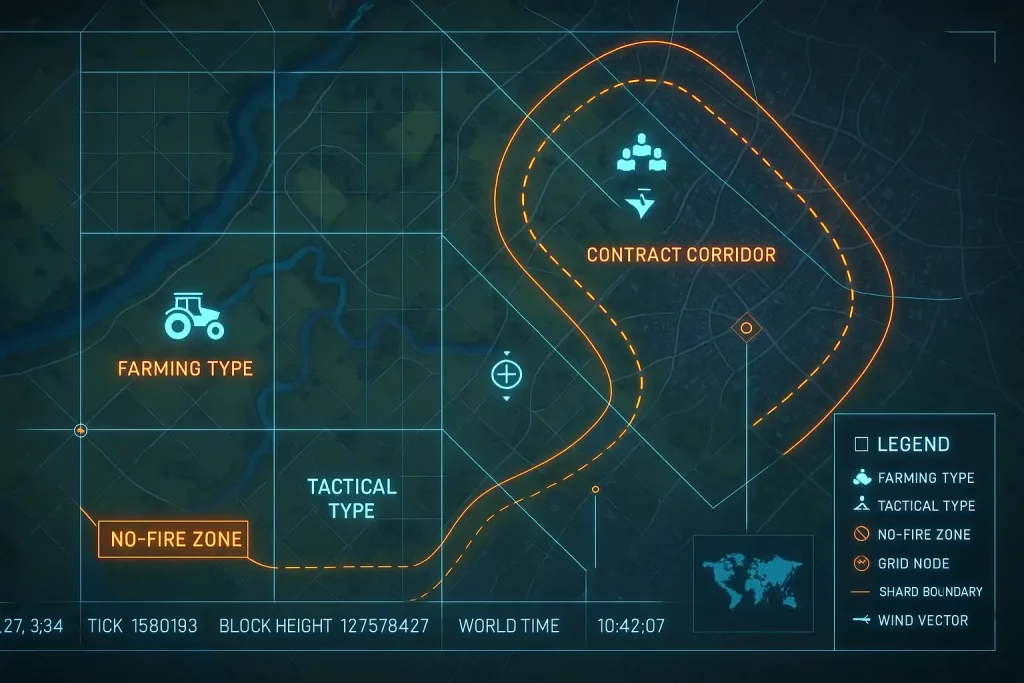
Economy design: why a shared world does not collapse into a mess
Multi-token vs single-token
Keep it simple. One protocol token for security and governance. In-game “soft currencies” are commodities with on-chain supply logic. Hard currency is scarce and stakeable.
The security budget and emission must be designed, not thrown together because someone wants a pump. There exist tokenomic designs that aim for maximum decentralization, security, and fairness, and they matter when your engine is infrastructure, not a product.
Paying the right people
- Validators and verifiers get protocol rewards, plus fees from high-intensity shards.
- Type authors get a share of fees from actions executed through their Type adapters.
- Asset creators get royalties per use, not per resale.
- Players get yields for useful actions that maintain the world, not just “click to earn.” Think of it as a work graph with transparent compensation.
3. Free to start, not free to exploit
Games that start free survive.
Freemium on public chains is historically hard because of fees and UX. But fast, parallel protocols built with UX in mind exist to change that calculus. They aim for fast finality and allow consumer-grade experiences without paying a kidney to click “craft.”
This is essential for mass adoption.
Tournaments and seasons
You can run real tournaments with on-chain rules, eliminations, prize splits, and anti-griefing clauses. The rules are clear, stages are timed, leaderboards are final, and disputes route to organizers with explicit authority. It has been done, and it will be done better with an engine underneath that was built for it.
Governance: fewer speeches, more merges
Constitution before chaos
Start with a short constitution. Two or three pages. Protect users from each other. Define sub-groups. Define how upgrades pass. Do not wait until the first scandal. You can draft in small circles, present to ambassadors, push to the broader community, and vote. It’s not pretty, it’s necessary.
Ship like an open source project
- Proposals are pull requests.
- Review by stakeholders with context.
- Merges when tests pass, audits green, and voters agree.
- Rollback procedures exist. You will need them.
Moderation as code
Chat bans, content flags, and creator permissions are on-chain policies, not Telegram arguments. If you ban someone, it is visible, scoped, and appealable. Public reason. No secret lists. The engine is a public square with rules, not a king’s living room.
The “humane” UX
Clients that do not make you swear
- Frictionless identity with wallets that do not feel like surgery. 24-word seeds for the adults, social recovery for the rest. Clients must handle imports smoothly and safely. People already do this every day. They will do it here.
- No gas popups in the middle of a firefight. Session keys, sponsored transactions, batched actions.
- Mod manager built-in, signed, and auditable. You choose the Type mix you want to see each session.
- Spectator mode that treats the world like a living broadcast. Because sometimes you just want to watch the chaos.
Legibility across Types
- Overlay toggles. See other Types dimmed, outlined, or as simple sprites. Your brain needs boundaries.
- Consent badges. “No PvP,” “Protected Habitat,” “Live Tournament Zone,” “Training Ground.”
- Universal pings. A ping is a ping. Your Type interprets it as help, harvest, heal, or hold.
Interoperability without spaghetti
- Canonical schemas for world objects. A tractor, a tank, and a tram are vehicles with different Type bindings.
- Behavior bundles. Acceleration, friction, health, yield, durability. Attach, detach.
- Conflict resolution through event priorities and locks, not “who clicked first.”
- Versioning in the registry. Multiple rule versions can coexist. Clients declare which they speak. The chain enforces compatibility.
The Farming x Tactical example, line by line
Let’s do the exact scene.
I plant soy. The chain records: plant(crop=soy, coords=[x,y], lot=123, tool=SeederX, seedBatch=ABCD, moisture=0.73). The event lands in the Agriculture domain. The soil model updates. It emits growthTick on the next ticks.
My friends drop in two ridges away. They are in Tactical Type. They request a fire corridor for 15 minutes. The corridor is an on-chain contract: if they break collateral limits, they incur penalties to their clan insurance, and bounty rights open to local citizens for damage repair. contract(id=FIRE-221, zone=Z-45, duration=900s, cap=damage<=2000 credits, signers=[ClanA, CountyDAO]).
I see a dim red overlay on my HUD. My harvest AI hints: “avoid zone Z-45 for 12 minutes, yield risk up 18 percent.” It is a nudge.
A stray round hits my irrigation pump. The engine checks the contract. Damage crosses cap. It emits damage(event=bulletImpact, asset=Pump9, owner=FarmerDW, amount=320 credits, source=ClanA).
The contract autoclaims against ClanA’s escrow. Funds route to FarmerDW. A repairTask spawns, with a bonus if you complete it in an hour.
In Tactical Type, my friends see a “civilian infrastructure damaged” penalty indicator. Their squad’s risk score climbs. Their pay this round will be a little worse. They adapt. They switch to suppressed fire.
They take the long way around.
No GM intervened. No screenshot ticket war. The engine executed law.
The fight ends. My yield forecast auto-adjusts. The county DAO extends a public bounty for fixing irrigation lines.
A city builder team claims it, brings a repair truck, and gains favor. That favor makes their next zoning request cheaper. The world keeps receipts.
This is how OneEngine makes different fun compatible. Not by hiding each other, but by binding us to shared consequences.
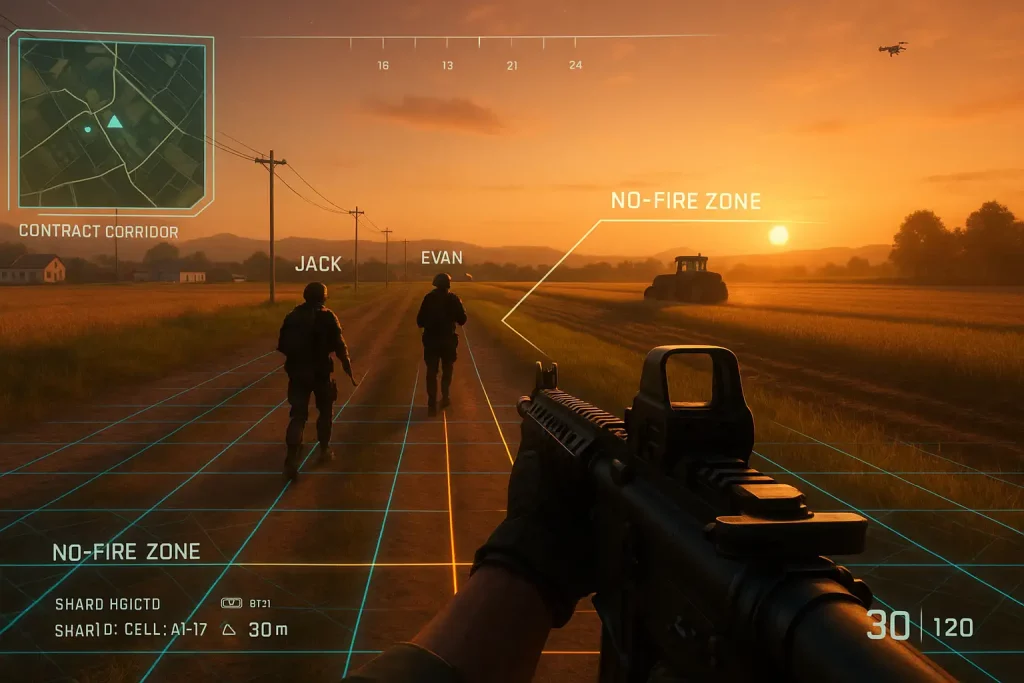
How do you start building this without exploding
Phase 0: a single-Type vertical slice
- Pick one Type. Farming or Tactical. Ship a fun loop.
- All authoritative state on-chain. All clients local render.
- Spatial shards, tick discipline, event logs.
- Privacy and consent basics.
- A simple AI maintainer that only does performance hints.
Phase 1: a second Type and a small overlap
- Release Tactical next to Farming, or vice versa.
- Define three cross-overlay events that matter. Collateral, sound, visibility.
- Run a week of mixed play. Measure griefing attempts. Adjust rules.
- Introduce the first economic loop across Types. Insurance or fuel trading.
Phase 2: creators and a registry
- Open Type authoring to a curated set of modders.
- Ship the registry with versioning, permissions, and revenue splits.
- Launch a small tournament to test scalability and fairness. Use real prizes. Learn hard lessons. It will be messy. It is supposed to be.
Phase 3: AI maintainer with teeth
- Let the AI propose balance patches weekly.
- Publish telemetry dashboards publicly.
- Share model artifacts on-chain. Vote on them. Pay data contributors from the model’s allocation.
Phase 4: brave new overlays
- Flight, survival, music, city.
- Run mixed-genre esports.
- Start civic pilots with a city DAO.
- Add mobile verification for dense anti-cheat and proximity checks.
Technical deep dive, lightly salted
The event fabric
- Topic partitions:
world.spatial.{cellId},domain.agriculture,domain.tactical,economy.insurance,governance.registry. - Ordering: per partition with vector clocks for cross-partition references.
- Conflict handling: lockless where possible, lease-based when necessary. No global locks for fun.
- Semantics: at-least-once on ingress, exactly-once on state apply. Replayable from genesis.
Execution
- WASM bundles for Type adapters and domain logic.
- Parallel runtime with deterministic scheduling.
- JIT hints from the AI for hot operators.
- Capability sandboxing. Each adapter gets only what it declares. If you do not ask for “alter asset ownership,” you cannot blink a battleship into your barn.
Cryptography
- BLS signatures for aggregate attestations, because your validator set is big and your patience is small.
- VRF-backed committee selection per tick or per block for verifiers.
- ZK range proofs for things like fog-of-war claim boundaries. Useful. Not everything needs a full proof circus.
Clients
- Predict-apply-correct loop.
- Bundle cache for assets, updated via torrents or IPFS.
- Telemetry opt-in with clear sliders: performance, behavior, strategy hints. Money in, if you contribute. Money out, if your data trains models that the community accepts.
Failure modes and how we face them
- Griefing through overlays: A Type that weaponizes cross-effects, like spamming sirens to ruin musician gigs. Fix with rate limits, fees, and escrowed collateral for certain actions in mixed zones.
- Economy spiral: A single commodity dominates. The AI proposes soft caps and alternative sinks. Governance approves temporary policies. Prices settle.
- Upgrade wars: One faction blocks every balance patch. Split channels. Allow clients to choose rule channels if they do not break shared safety.
- Validator collusion: Protocol designs with high Byzantine tolerance and fast finality reduce the window to cheat and make it expensive. Keep committees random, ephemeral, and diverse.
- Telemetry abuse: Never sell data silently. All aggregation is paid and auditable. The maintainer loses budget if it is caught cheating.
Culture: the only real moat
Technology is not enough. You need a culture that tells the truth early.
- No FOMO passes as design. If your mechanic needs a Ponzi to be fun, it is not a mechanic, it is a marketing budget.
- Creators get paid first. They are the lifeblood.
- Players are not sheep. They are peers who will help you find your blind spots if you stop pretending you have none.
- Governance is boring. Good. Keep it boring and tight, so players can spend time playing.
We have seen small ecosystems where community, devs, and validators actually talk and iterate, where a game in early access runs tournaments with public rules, resetting scores, and explicit prize logic. It is not a fantasy. It is early, but it is alive.
Dialogue interlude: a late-night patch meeting
Dapp Whisperer: The tractor meta is broken. People are forming convoys that clog the southwestern trade artery. Travel time doubled.
They are optimizing. That is the point of games.
Dapp Whisperer: They are turning fun into a spreadsheet.
Then you mispriced the artery. Congestion has a cost. If we apply a quadratic toll during peak, the convoy splits. If we add a rest-stop buff for off-peak deliveries, behavior spreads out. Proposal assembled. Budgeted burn for three weeks. Simulated outcomes attached. Want to read the math or push the shiny button?
Dapp Whisperer: Show me the graph.
It is in your inbox. Also, you forgot to harvest the test plot near Z-45. Yield loss 6 percent. You were writing a manifesto instead.
Dapp Whisperer: Accepted. Both the patch and the roast.
Personalization without rigging the match
Adaptive engine sounds like unfair assist in competitive Types.
The fix is clear.
- Personalization bands are opt-in and Type-scoped.
- Ranked play disables them.
- Casual play lets you pick a “comfort curve” for pacing, not for aim.
- Accessibility layers are standardized. No shame, no advantage beyond visibility and input ergonomics.
The AI’s job here is to reduce friction for each player, not to push you to click on a crate. It learns when you get bored. It suggests a different task. It does not push a shop popup in your face. It is the coach, not the casino.
The long arc: soul, memory, and dignity
If we do this right, players will pour time into this world. Years. That time should not vanish when a studio pivots, or when a sequel invents pretext to delete your life.
The chain keeps receipts. Your farm, your guild treaties, your esoteric race route from the old days, your stupid nightclub where you met friends at 2 a.m. All of it is a set of events, notarized. Ten years later, new clients can render it again. Not nostalgia as a YouTube clip, but as a place you can visit and smile because your stupid scarecrow is still there.
If you squint, this becomes an archive of selves. Not immortal souls in a server room, but traces of taste, habit, patience, and kindness encoded in how you played. Maybe your grandkid plays under your name one day and walks your old routes, reads your public notes, hears your music, sees your treaties, and laughs at your bad fashion.
The engine is a machine for meaning. If it is on-chain, it will outlive us. That is the point.
Reality check, with receipts
- Fast finality and parallelization are not dreams. There is peer-reviewed work on probabilistic PoS protocols that hits those goals by trading deterministic guarantees for statistical ones, with committees, randomness, and clean separation of block propagation and execution attestation. That is our performance base.
- Clear role separation for network participants is known practice. Producers, keepers, verifiers, managers, and mobile verifiers. These roles let a mass-market game enlist thousands of light participants to harden integrity.
- On-chain game ops like tournaments with staged eliminations, resets between stages, tie logic, public prize splits, and accepted early access rough edges, already exist. Messy, yes. Real, yes.
- Player strategy cultures emerge overnight when mechanics are interesting. People discover combos, write guides, and break your assumptions. Good. Bake that into the engine’s learning loop.
If this manifesto annoys you because it sounds ambitious, then it is working. This is not a one-quarter feature. This is a decade of work. But the pieces are here. They only need stubborn hands.
Closing notes for the builders
- Start with the event fabric. Without it, you are drawing castles on paper.
- Keep determinism sacred. If two machines replay from genesis and end different, you failed.
- Make consent visible. Players should always know what other Types can do to them.
- Let AI propose, not impose. Humans hold the big red button.
- Pay creators first, then validators, then yourselves. The order matters.
- Ship boring governance. Your future problems will be political, not technical.
- Invite constraints. They make worlds interesting. Unlimited power breeds boredom.
- Never fake scarcity. Simulate it honestly, or do not simulate it at all.
- Document everything. This will be a public work. People will build on it after you are tired.
- Be kind. Your players will forgive bugs if you tell the truth and fix them fast. They will not forgive manipulation.
You forgot number eleven.
There is no eleven.
“Do not let the marketing crew write the roadmap.” There. Now there is.
Appendix A: A sharper blueprint (for the engineers who will ask anyway)
- Consensus: probabilistic PoS with two-step commit, VRF committee sampling, BLS aggregates, finality in hundreds of milliseconds region per hot cell, subquadratic messaging.
- Execution: parallel scheduler keyed by
cellId, cross-cell message queues, rollbacks as first-class citizens with conflict proofs. - Data model: append-only event log with domain tags and spatial keys, CRDT-style merges where semantics allow, locked transactions for cross-Type scarce resources.
- Game Type SDK: declarative schemas for actions, effect handlers in WASM, capability manifest, gas budget hints, test harness with deterministic replay.
- AI maintainer: on-chain proposal contract for patches, off-chain training with federated data, model artifact registry with versioned weights stored via content addressing, royalties to data contributors.
- Governance: bicameral lightweight model, creators and validators both with veto powers on their domains, emergency brake contract with quorum thresholds, sunsetting clauses for all temporary policies.
- Economy: single security token staked by validators and managers, commodities and soft currencies as domain assets, fee markets per domain, insurance and bounty contracts standardized.
- Tooling: time travel debugger that replays ticks and renders as a video, event inspector, shard load monitor, griefing heatmap.
- Ops: chaos drills monthly, tournament drills quarterly, AI patch cadence weekly with holdbacks, client mandatory updates only for critical security.
Post-credits scene
The field is quiet again. The irrigation is fixed. I run the combine.
The sun is a steady accountant.
A convoy passes by on the ridge, not soldiers this time, just traders moving timber to a music festival where someone will press a vinyl with sound recorded live from last night’s storm.
It is silly. It is earnest. It is a world.
OneEngine is not about building the biggest game. It is about building the last engine you will ever need, and teaching it to be a good host.
Finally, something we agree on.
Links
- Acki Nacki Tokenomics: https://tokenomics.ackinacki.com
- “ACKI NACKI: a Probabilistic Proof-of-Stake consensus protocol with fast finality and parallelisation” (LNCS, 2024): https://doi.org/10.1007/978-3-031-61486-6_4
- Acki Nacki Docs: https://docs.ackinacki.com
- Popit Games news channel: https://t.me/ackinackinews
- GOSH: https://gosh.sh
- DappAhoy: https://dappahoy.com
Citations
Protocol performance and design claims are grounded in published work on probabilistic PoS with fast finality and parallelisation.
Network participant roles and decentralization approaches are drawn from tokenomics references with explicit role splits, including mobile verification for broad integrity.
On-chain game and tournament mechanics, staged eliminations, reset semantics, and prize handling reflect documented early access patterns and formal tournament rules.
Community-driven strategy cultures and emergent meta illustrate how players rapidly optimize within constraints, providing data for AI maintainers.
End.


